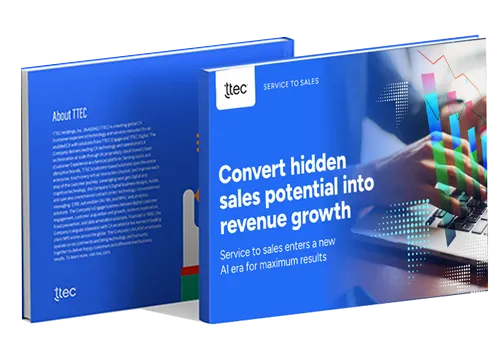Too often, organizations stick to the status quo and clinging to old habits, missing out on new opportunities along the way. It’s time to make some changes, especially when hiring salespeople.
In today’s market, a successful go-to-market approach needs to feel customer-driven and highly personalized – but, at the same time, teams need to do more with less, struggle to attract and retain top talent, and have to cut costs where they can.
When you add in the myriad tools available for every part of the revenue journey, things can get overwhelming fast. The last thing you need are “old” hiring methods that are actually hindering your ability to grow your sales team.
“I only hire reps with previous sales experience…”
A lot of sales leaders have preconceived notions about what they want in a salesperson and a clear vision of the type of candidate they think will drive success. But in today’s sales environment you need to question, “Why is this required?”
Ask yourself:
- Why do BDRs need sales experience? (They might not.)
- How am I determining the pay scale for my reps? (You might be doing it wrong.)
If you’re going to require sales experience when hiring sellers, you need the data to prove it. More than 77% of successful Sales Development Representative (SDR) and Business Development Representative (BDR) profiles at TTEC don’t have previous sales experience (either none or less than a year).
Traditionally, sales leaders have sought to hire XDRs and AEs who have prior sales experience – but often that investment doesn’t pay off. In our experience, we’ve seen that there are cohorts of SDRs and BDRs who came from the same company (sometimes even the same teams) but end up being top performers and bottom performers. So, how much weight should we place on a single data point like “previous sales experience?”
The length of sales experience someone brings to your team doesn’t necessarily correlate to that person’s odds of success. Instead of making prior experience or a marketing degree a prerequisite, seek out candidates who demonstrate the abilities and personality needed to thrive in the sales environment.
We looked at a cohort of 290 sales rep, dividing it in half based on years of experience. The top half with the longest tenure hit an average quota of 127%, while the bottom half with the least tenure was close behind, hitting 120% of quota.
We’ve seen it first-hand: some SDRs have come straight from the retail world, with no previous sales experience, and quickly outperformed ones who came from a more “traditional” sales background. In short, we’ve found that will trumps skill.
Take a hard look at your hiring criteria and ask yourself, does it limit your pool of candidates unnecessarily? These days, when attracting and retaining top talent is harder than ever, sales organizations need to cast a wider net, and an outsourcing partner can help.
Working with a partner lets you fish in ponds where your competitors aren’t looking. Consider this: In big markets like San Francisco, Los Angeles, and New York City, your on-target earnings (OTE) is probably going to be around $60,000 to $80,000 a year, according to the Betts Recruiting Compensation Guide, but in other markets OTE for a similar profile is probably be closer to $40,000 to $60,000. This shows that proper compensation is key.
Align compensation to sellers’ skillsets
Sales organizations across all industries are looking for any possible way to cut costs without sacrificing customer experience and improving margin, especially now. People are among the biggest expenses for any team, so how can you attract and retain top sellers without overpaying?
It’s key to make sure your compensation is aligned to sellers’ skillsets. Underpaying team members means you’ll eventually lose them to competitors, while overpaying will create a ripple effect that slows down your ability to scale and could put you in a bad position during market changes.
But when it comes to sales organizations paying their salespeople, there’s no one-size-fits-all approach. Various job factors can affect compensation plan design, ranging from conditions in your local market area to expectations about the duties salespeople need to perform at your company.
It’s also hard to define “aligned” when it comes to pay. From the seller’s perspective, the label “aligned” refers to pay that’s comparable to or better than the market value of a position. In human resources, a competitive salary is the average market rate for the role, plus a percentage of that rate – but this percentage may vary depending on a company’s pay philosophy. And market value of a sales role can fluctuate based on a variety of factors like industry and location, so it’s important to remember that an “aligned pay” may vary.
The right partner can help
Reimagining how you recruit, structure, and compensate your sales team can seem daunting – but you don’t need to go it alone. Working with an outsourcing partner can give you access to the people, tools, insights, and strategies you need to assemble a sales team that’s built for today, tomorrow, and beyond.
It’s time to rethink how you’re building and getting the full potential from your sales team, and the right technology, people, and expertise need to be key parts of the process.
















